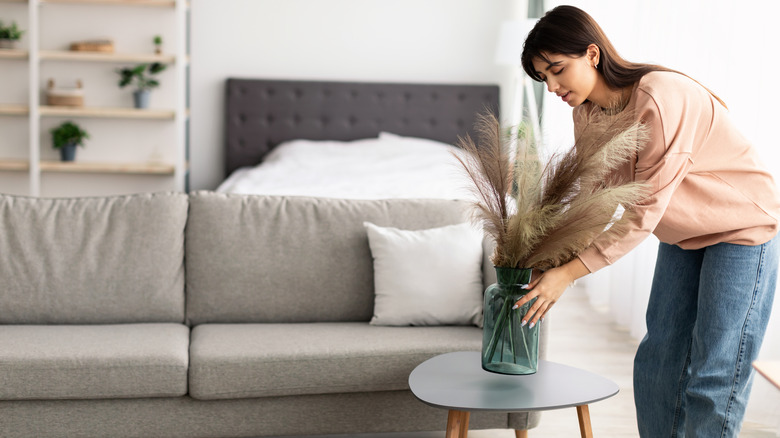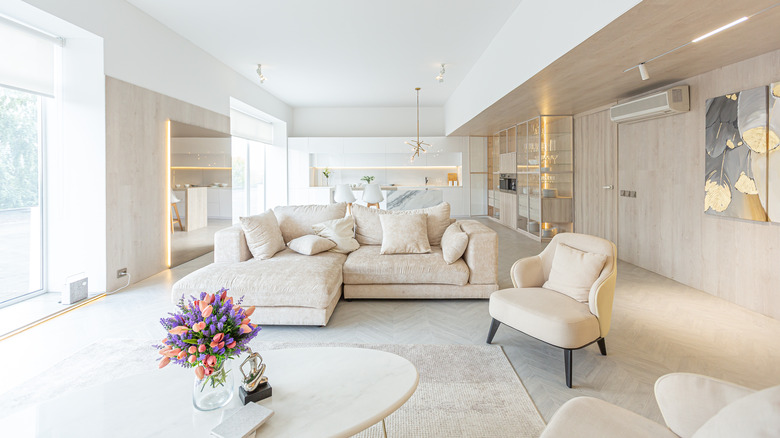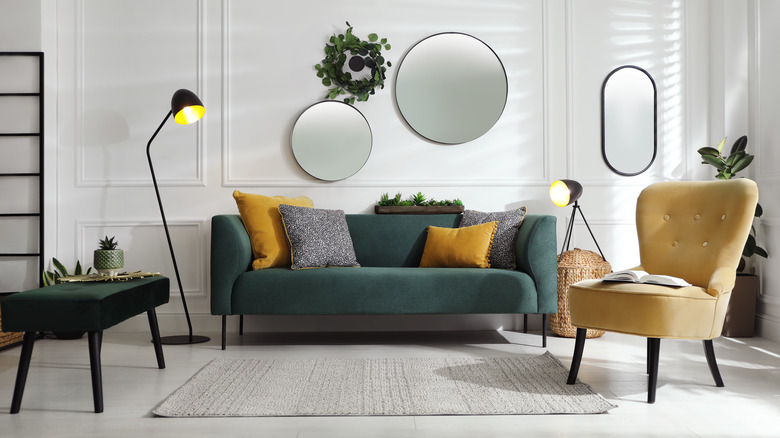Why Filling Your Room With Small Furniture Is Making It Look Cheap
You take pride in your home, and one term you never want to hear in regard to your space is "cheap." While being thrifty and savvy is great for finding deals on ornaments or even furniture, you don't want your décor to come across as tacky or cluttered. When you're planning out a game plan for a room, you might be inclined to fill it with favorite furnishings, some of which might end up looking out of place. When people put too much into a space, it can produce a chaotic, forced aesthetic that comes across as cheap.
Just because there is space doesn't mean every square inch of a room has to be taken up with tiny pieces like side tables or footstools. Of course, having enough seating is always at the forefront of your mind if you're planning to host multiple parties or gatherings. However, too much small furniture can be detrimental and turn your home into a budget version of what it could be. According to MyMove, some pieces can actually be considered too small or non-essential to a room but are shoved in anyways to distract from negative space, which could appear overwhelming. Negative space can actually be good, and here is why those smaller items could be turning your place from chic to cheap.
Too much small equals a big problem
The main reason why using too much small furniture in your home can make it look cheap, according to The Everygirl, is because it turns into a cluttered maze of stuff. Multiple items crammed into a room give off the idea that there was no plan or direction behind the design. People who are trying to decorate large spaces feel like there has to be enough furniture to fill it properly, but this isn't necessarily true. Whether your room is big or small, opt for larger pieces that are picked out with the overall theme in mind.
Instead of multiple side tables, find a stocky coffee table that offers an abundance of space for drinks, food, games, ornaments, or whatever else you need it for. Use that as one focal piece in a living room, then build around it with a large cozy sofa and a narrow armchair that fits with the aesthetic. Next, find a few pieces that can accommodate guests (for living and dining areas), then allow some negative space to remain. This makes the room you're decorating feel less cluttered but still welcoming and accessible.
Less is more
Choosing an oversized couch for your living area is a great way to ensure people have a place to sit and hang out, but it also leaves more room to navigate between furniture than if you were to have multiple chairs or couches. If you have a smaller space, take the time to measure each room's square footage so you don't overdo it with large pieces, as this can have the reverse effect and end up looking cluttered as well. Big items should be useful but shouldn't take over the room. Depending on the size of your space, Ballard Designs recommends spacing coffee tables and sofas 14 inches to 18 inches apart, while other furniture should sit 30 inches to 36 inches apart.
If you're worried about not having enough seating for guests, you can always invest in multi-purpose pieces, like benches that can double as storage and a place to relax. Bigger ottomans or footstools can replace a coffee table, providing a flat surface for magazines (or add a tray on top for drinks) which can be removed when people want to take a load off.


